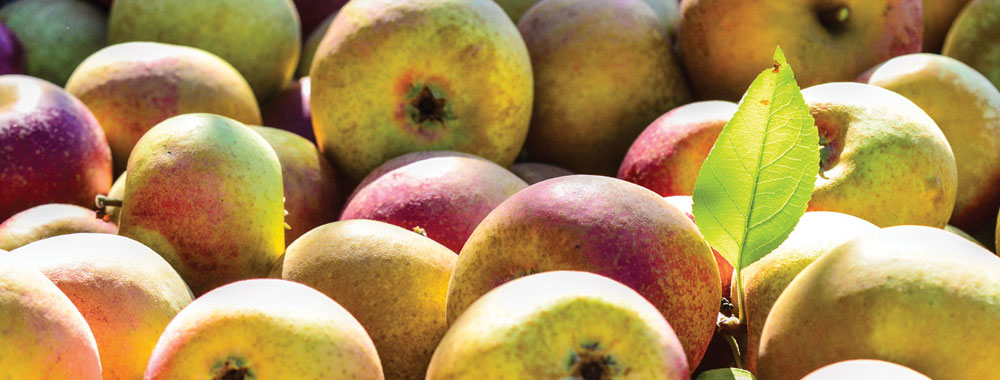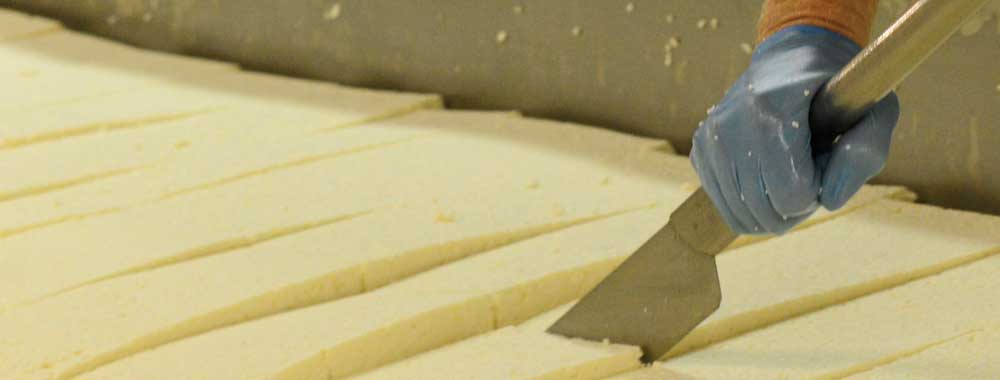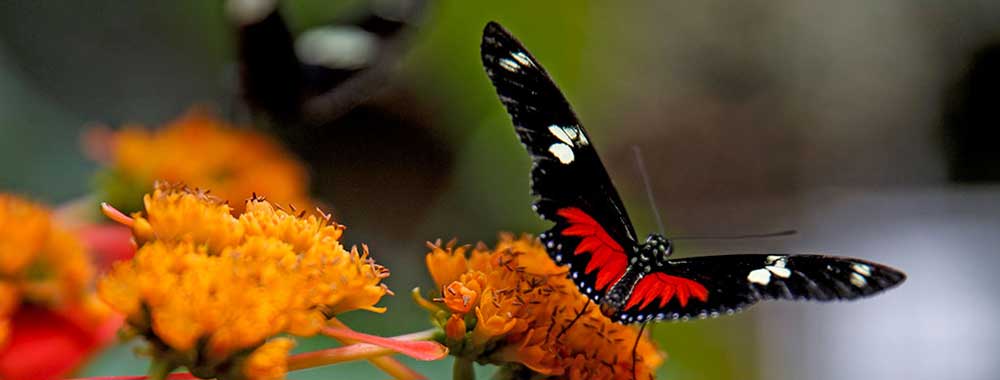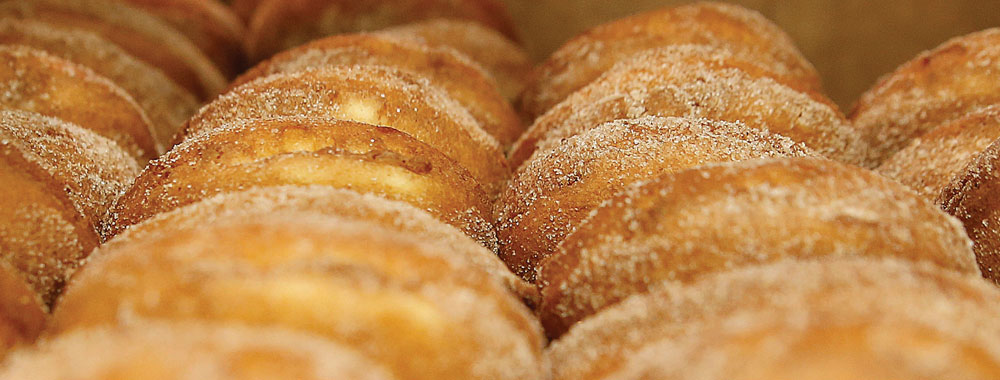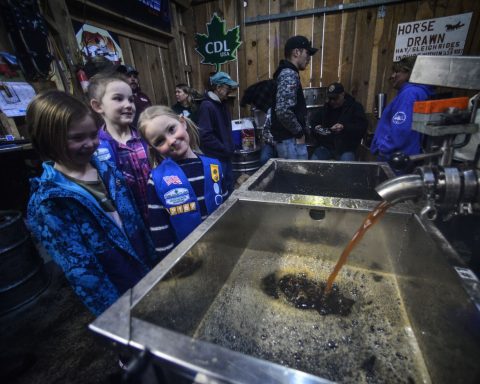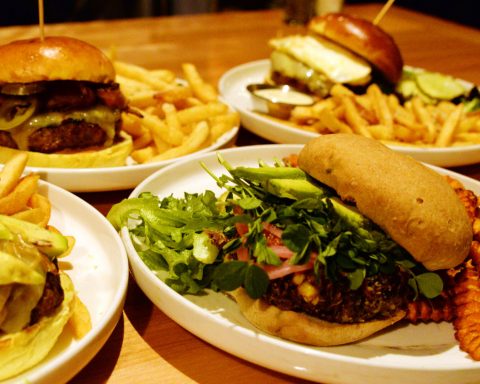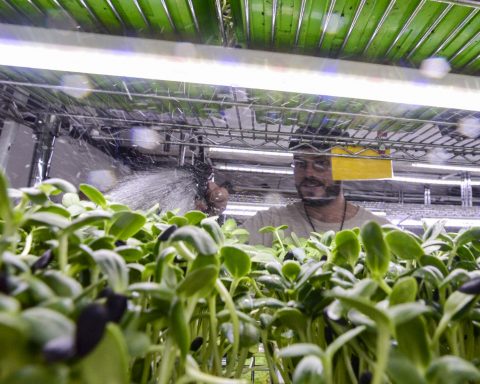
On Scott Farm in Dummerston, Vt., more than 100 ‘almost-lost’ varieties are grown with tender care
By Natalie Wise
A crisp scent wafts in the air at Scott Farm Orchard in Dummerston, Vt., but it isn’t just your average honeycrisp. You’ll come across heirloom varieties like Duchess of Oldenburg, Sheep’s Nose and Snow Apple.
This classic Vermont orchard grows more than 100 “almost-lost” varieties of apples.
Scott Farm Orchard has been in continuous cultivation since 1791, so it is with good reason the picturesque property is on the National Registry of Historic Places. The farm is owned by Landmark Trust USA, an organization dedicated to preserving historic properties.
Here, orchardist Ezekiel “Zeke” Goodband embodies the image one associates with the kind of person who dedicates his life traveling the world to save rare apples. The spiry man with a long, gray beard is kind and soft-spoken. He’s always ready to pull out his trusty pocket knife to cut you off a slice of whatever apple is nearest at hand. Goodband has been with Scott Farm since 2001, and, in that time, has added more than 125 varieties to the orchard’s collection.

“The orchard is a mosaic of all these different colors, flavors, aromatics during the fall,” Goodband said.
His day starts with checking on every apple variety that is close to being ripe, tasting them and checking the color of the seeds as another indication of ripeness. Goodband has a crew to harvest the apples, spread over 20 miles of rows of trees on 571 acres.
Some in the crew have been with Scott Farm for 30 years, Goodband said, and they spend a lot of time together.

They harvest apples from late July through the end of November, then spend the winter on snowshoes pruning each and every tree. The crew takes Thanksgiving Day off, and as Goodband has gotten older, the day after Thanksgiving. But after that, the crew works seven days a week.
People travel far and wide to meet with Goodband and seek his opinion on the best apples and their uses.
For cider? A variety: Apples that are astringent, sweet and tart, then add “accent apples” with specific tastes.
For pies? Try Greening’s Rhode Island or the Wolf River.
The most unique apple? Perhaps the oldest American variety, the Roxbury Russet, which is said to taste like pineapple and have the texture of coconut.
If you’re looking for the most textbook schoolhouse red apple, well, that’s the Baldwin, and it was the main apple grown in New England until the 1930s.
Goodband’s most exciting find?
The Court Pundu Plat.
A French variety, the Court Pundu Plat, “goes back to maybe the late 1500s,” Goodband said.
“It’s a very small apple. Very, very flavorful. It’s just started to produce apples for us, so I’m pretty excited about that,” he said.
If you’d like to pick Goodband’s brain about apples and then pick some apples yourself, visit Scott Farm on Heirloom Apple Day.

Every Columbus Day Weekend, the Scott Farm hosts its Heirloom Apple Day to celebrate these rare apples and the unique lore and tastes they bring with them.
Want to try the apple that’s pink inside? Or the one that tastes like a lemon? Goodband gives talks throughout the day about some of the most unique apples — perhaps Thomas Jefferson’s favorite, the one that Henry David Thoreau waxed poetic about in his journal, or the variety known for making the most authentic apple strudel, followed by a sampling of 16 to 18 of the apples that are perfectly ripe during Goodband’s morning rounds.
“I don’t spend a lot of time talking during the year, and I make up for it on Heirloom Apple Day,” he said.
Heirloom Apple Day also includes fiddle music, guided tours of the stone walls on the property, wood-fired pizza, pick-your-own apples and a hard-cider tasting from Whetstone Ciderworks, which uses apples from the farm. There are activities for children, too. And you’ll probably find Goodband’s grandkids exploring and tasting their favorite apples.
“They all have their favorites, they’re much more definitive than me,” he said.
At Scott Farm, the Old Lady in Winter and the Pink Lady are among the obscure varieties.
The Old Lady in Winter, also known as the Knobbed Russet, is not pretty on the outside, but has a crisp, bright taste. The Pink Lady is believed to be the oldest variety of apple still in cultivation, dating from the 1500s, and she’s still as pretty as she was then.
It’s a worthy pursuit to keep these delicacies alive in an era where shippability and looks are the most important attributes of an apple, even before taste.

You won’t be able to pick your own heirloom varieties directly from the trees, since those trees are more vulnerable. However, the more mainstream varieties, such as JonaGold and Empire, are yours to collect using a 6-foot apple picker or your own hands. If the kids get a little over ambitious and pick too many apples, donate them to the Feed Your Neighbor campaign that supplies apples to local food pantries.
Don’t worry, though, you will be able to take these unique fruits home; the farmstand has a generous selection of the heirloom varieties. Once you’ve chosen your favorites, load up on local jams, fresh cider and heirloom apple pies.
You’ll want to share them with others, just like Goodband did after tasting his first heirloom apples as a young farmer.
“The flavors were ones I’d never dreamed of and I knew other people like me would love to try these,” he said.
Natalie Wise has a masters degree in poetry from Dartmouth and is the author of four books. When she isn’t writing, she is likely baking or spending time exploring this beautiful area with her husband and their chocolate lab.
